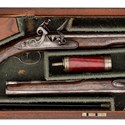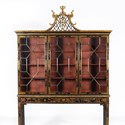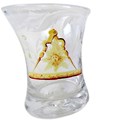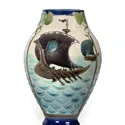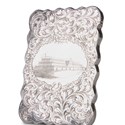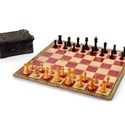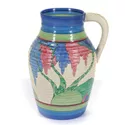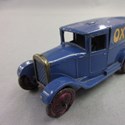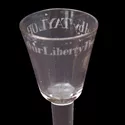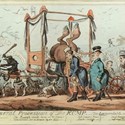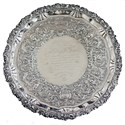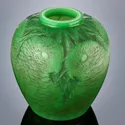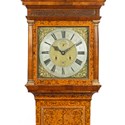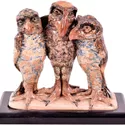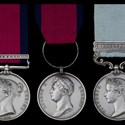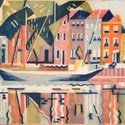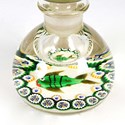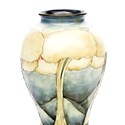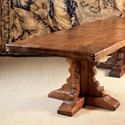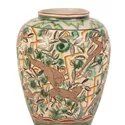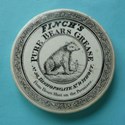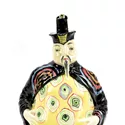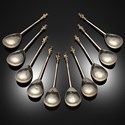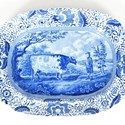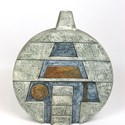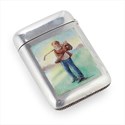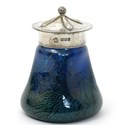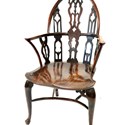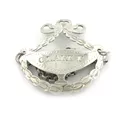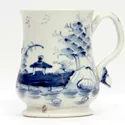Collecting Guides
ATG's selection of Collecting Guides take an in-depth look at popular collecting areas, helping buyers to understand the subject and the market.
Antique Firearms
The history of firearms is one of continuous evolution and development. The centuries-long arms race which started in earnest in the 16th century has left the modern collector with a wealth of material to choose from.
Antique Furniture
Furniture is one of the most traditional and wide-ranging sectors in the art and antiques market.
Beilby Glass
Within the broader context of 18th century drinking glasses there are certain areas which form the basis of specialist collecting fields. One of these is Beilby glassware, a class mostly of drinking glasses distinguished by painted white and coloured enamel decoration produced over a short period around 1760.
Beswick
Established in 1894 at Longton, Stoke-on-Trent by James Wright Beswick and his sons John and Gilbert, the Beswick Pottery first made its name producing affordable tablewares and ornaments.
Burmantofts Pottery
Entering the fray of a burgeoning British art pottery movement in 1880 and leaving it as a financial bad lot in 1904, the Burmantofts Pottery ran for 24 years. During this relatively brief flowering, more than 2000 different models were produced with talent arriving in Leeds from both the locality and from much further afield.
Card Cases
The visiting or calling card was an essential accessory to any proper Regency or Victorian lady or gentleman. And the cases in which they were carried were status-enhancing accessories too.
Chess Sets
The variety and styles of chess pieces made over the years offers huge scope for the keen international audience of collectors that operate in this area.
Clarice Cliff
The Staffordshire born and bred designer Clarice Cliff made her name with the brightly coloured range of Art Deco pottery she designed in the 1920s.
Die-cast Toys
Among the British toy makers who exploited the new technology of die-casting in the early 20th century were Dinky in the 1930s and then later they were followed by companies like Corgi, Matchbox and Britains.
English Drinking Glasses
English drinking glasses have a long collecting pedigree. Certain types have been sought out for many centuries as ceremonial accoutrements, but the idea of collecting them as objects of antique interest goes back at least to the 19th century.
Georgian Political Caricatures
The early 1780s witnessed the emergence of the professional caricaturist and the satirical print as a force in urban culture. It was a uniquely British phenomenon as only in Britain did the necessary conditions – freedom of expression, party politics and a receptive market – combine.
Irish Provincial Silver
When it comes to Irish silver, the Company of Goldsmiths of Dublin exercised full control over the manufacture of ecclesiastic and domestic plate in Ireland since its foundation under Charles I in 1637.
Lalique
Lalique glass has long been a world-famous brand, internationally admired and still in production today under Swiss ownership. But for René Lalique, it represented a second commercially successful career.
Longcase Clocks
The longcase clock, also known as the grandfather clock after the popular Victorian song, was the product of two pan-European horological breakthroughs of the late 1650s – the application of the pendulum clock and the invention of the so-called anchor escapement.
Lowestoft Porcelain
The East Anglian fishing port of Lowestoft, set far away from the other centres of 18th century porcelain production like London, Staffordshire or Liverpool, began producing porcelain commercially in the late 1750s.
Martin Brothers
“When you enter the shop… you find yourself in a dim-lit passage with crowded shelves of stoneware jugs carved into leering, laughing, grinning and ogling heads, jostling with the most impossible, and most fascinating, pot birds with strangely anthropological expressions…”
Military Medals
Bringing a wealth of fascinating stories from Rorke’s Drift to the heroics of civilians in the Blitz, campaign medals and gallantry medals are one of the most instantly accessible of collecting fields.
Modern British Prints
Those who thought that they could never afford a Henry Moore, Bridget Riley, John Piper or even David Hockney, might be surprised to discover that it is not such a far-fetched ambition, even on a relatively modest disposable income, thanks to the world of the Modern British print.
Monart
In its heyday during the 1930s Monart glass – Scotland’s answer to the French art glass movement – was celebrated for its vivid, spiralling colours in the fashionable emporiums of London, New York and Melbourne.
Moorcroft
William Moorcroft (1872-1945), an art school graduate and the son of a Burslem china painter, was first employed in 1897 as a 24-year-old designer for the commercial pottery and porcelain firm of James Macintyre & Co.
Mouseman
Robert ‘Mousey’ Thompson (1876-1955) was an English craftsman inspired by the British vernacular tradition.
Poole Pottery
With its harbour and an abundance of red clay to the north of the town, Poole in Dorset had long been a centre for pottery making ever since a builder's merchant and ironmonger, Jesse Carter, bought a run-down tile manufacturing company on the quayside in 1873.
Pot Lids
It was Felix Edward Pratt (1813-94) who spotted the commercial possibilities of using new printing technology to decorate the lids of containers for popular products such as bear's grease, gentleman's relish, potted shrimps and cosmetics, with sophisticated designs.
Royal Doulton
Royal Doulton’s rise from London makers of domestic stonewares to an internationally-recognised Staffordshire Potteries brand, could scarcely have been predicted in 1877 when the Lambeth concern arrived in Burslem.
Scottish Provincial Silver
Despite laws instructing goldsmiths to send their wares to Edinburgh (and later Glasgow) for hallmarking, many silversmiths from the burghs of Scotland enjoyed sufficient independence from the assay office to use local marks.
Silver Spoons
The many variations and styles of silver spoons, together with their long history, has created a rich collecting seam. Enthusiasts collect by type, function, by maker, by geographical area or by decoration.
Sporting Memorabilia
The market for sporting memorabilia is a diverse area of the antiques market, not just because the range of sports covered – from boxing to bowls – but also due to the vast spread of object types available to collectors.
Taxidermy
Did you know there were more than a dozen taxidermists showing at the Great Exhibition in 1851, the year when 75,000 visitors paid to see John Gould’s exhibition of stuffed hummingbirds at Regent’s Park Zoo?
Tiles
The history of British tiles reflects both the fashions of interior and exterior decoration, as well as the development of British ceramics manufacture.
Transfer Printed Pottery
The advent of underglaze transfer printing, perfected at the Spode factory in Stoke-on-Trent in 1784, marked a key moment in the history of British ceramics.
Travel Posters
The poster, as we know it, dates back to the 19th century when the innovation and use of high speed colour lithography by Jules Chéret made mass production possible and brought this liberating and exciting art form to the masses.
Troika
The singular ceramics produced at the Troika factory in the 1960s and 70s rank among the most distinctive wares of the period.
Vesta Cases
Vesta cases are small portable boxes made to contain matches and keep them dry. They take their name from the Roman goddess of fire and the hearth, although in the United States they are more prosaically know as match safes.
Whitefriars Glass
Britain’s longest running glass house, best known as the Whitefriars factory, was purchased by James Powell for his three sons in 1834. It subsequently led fashion and technology in the manufacture of domestic glass for a century and a half.
Windsor Chairs
The Windsor chair is recognised as one of the classics of English country furniture. They were often made by village craftsmen to traditional designs in native woods like elm, ash, beech and yew.
Wine Labels
Wine labels, used to embellish and identify the contents of a decanter or bottle, first came into use about 1730.
Worcester First Period
Worcester is the most widely collected of 18th century English porcelain factories. The period from the factory’s foundation in 1751 to 1783, when it was acquired by Thomas Flight, is known as the First Period or the Dr Wall period after one of the original partners, Dr John Wall.

